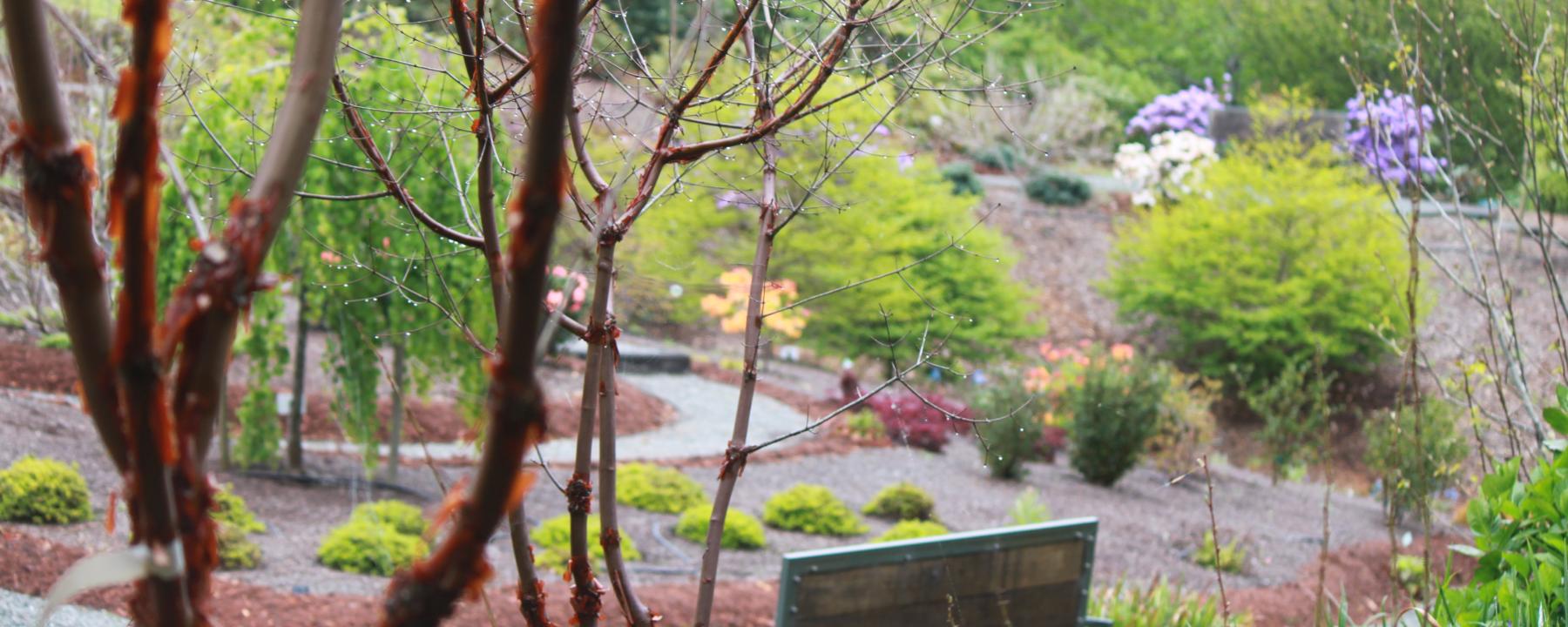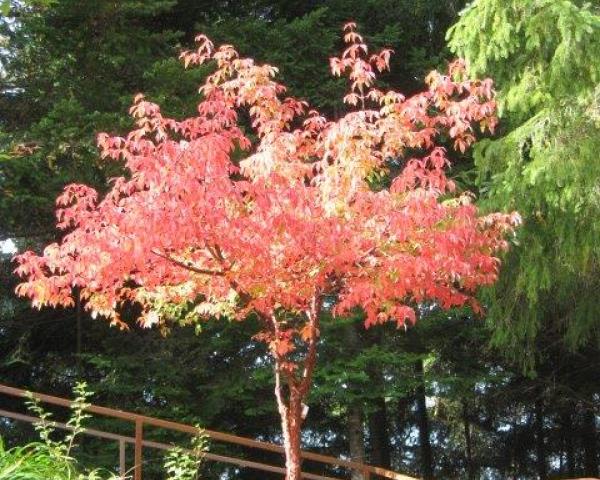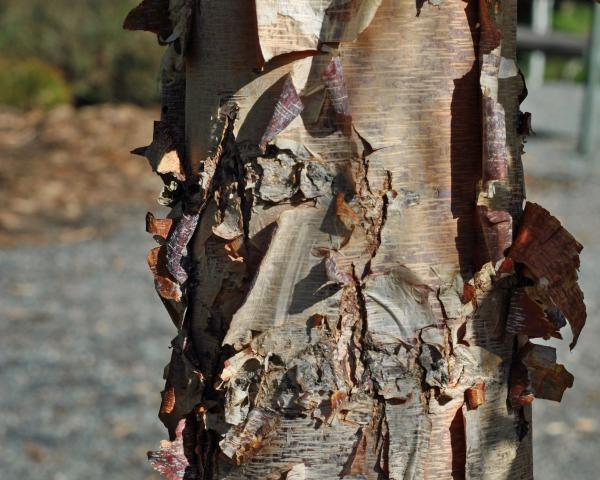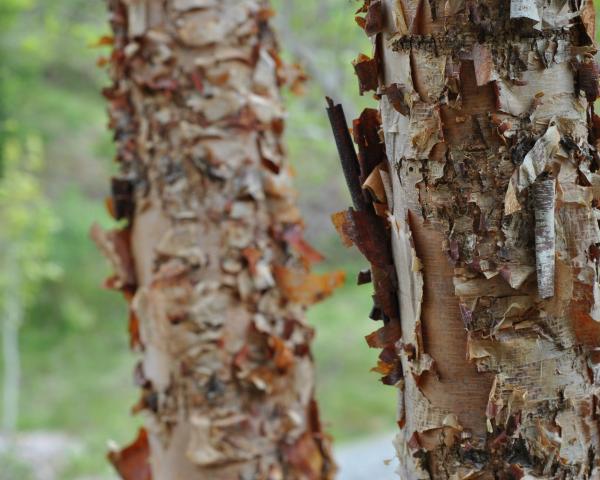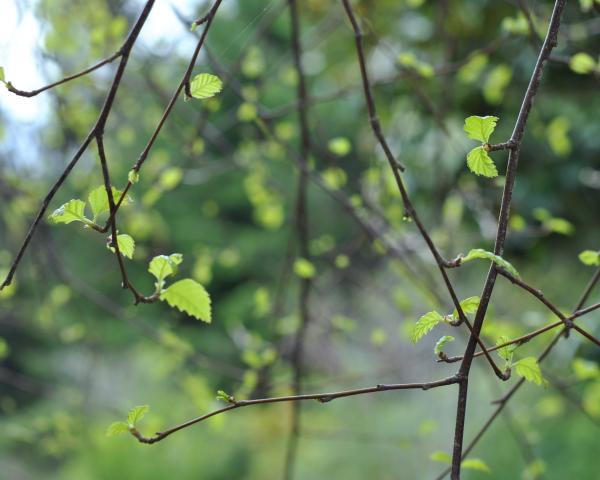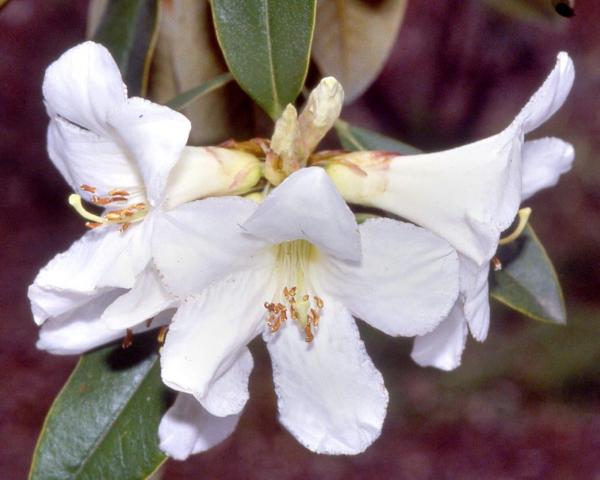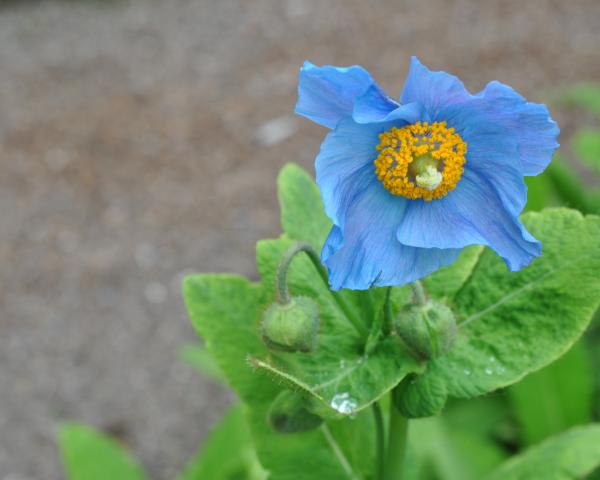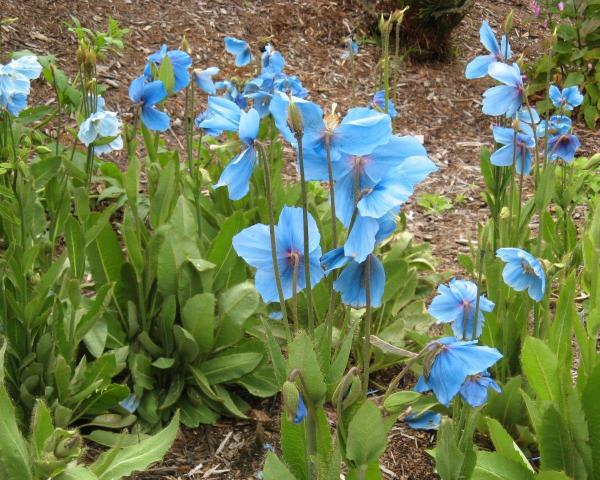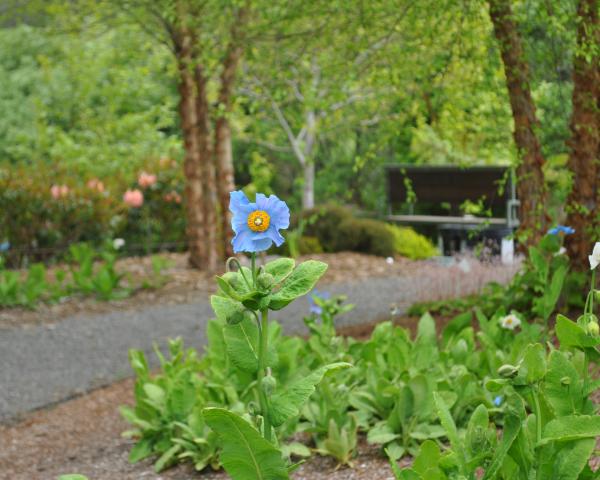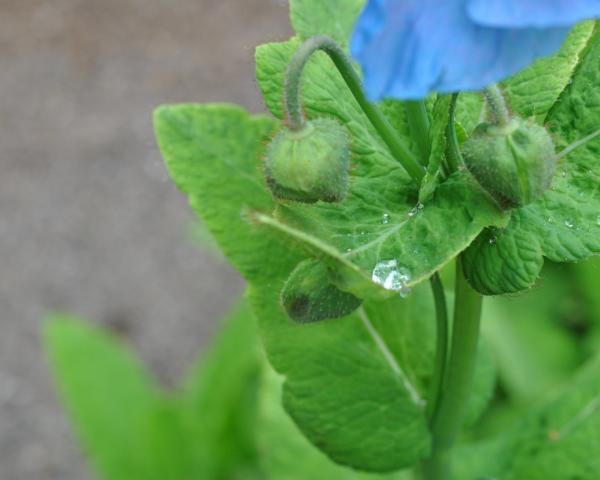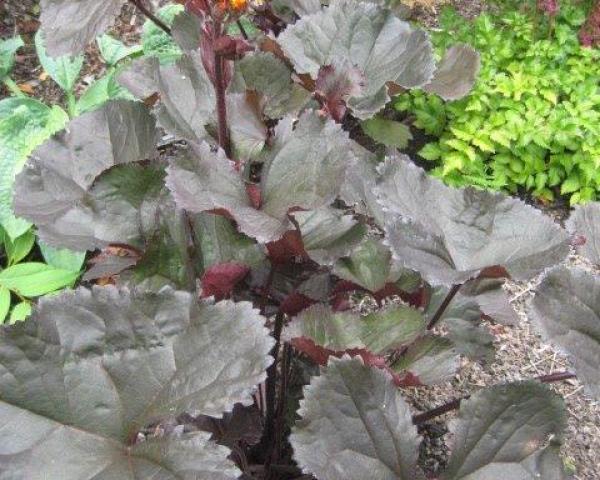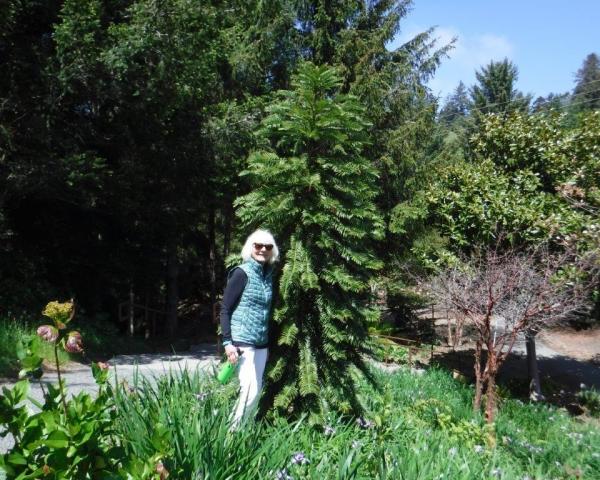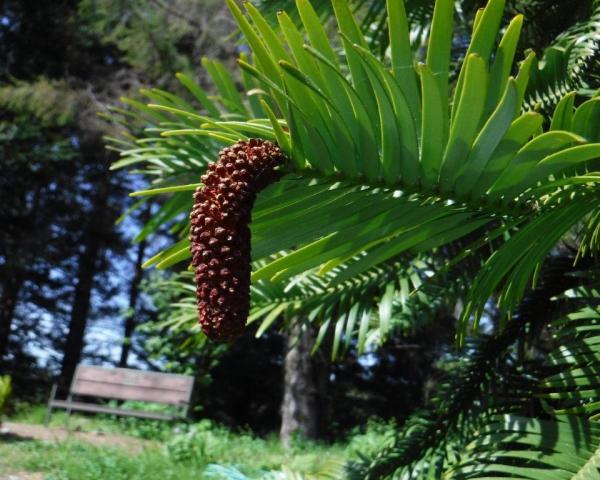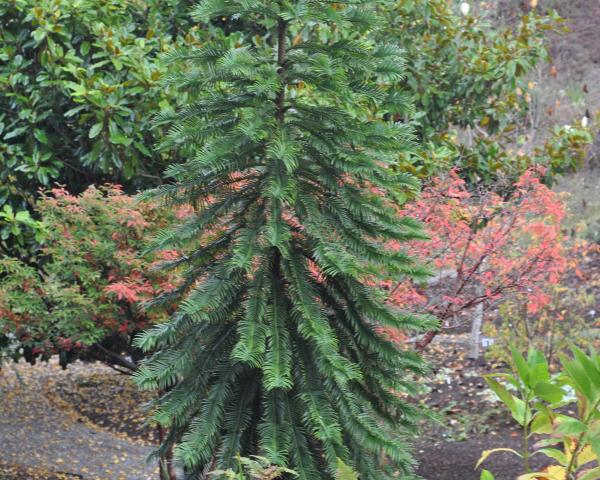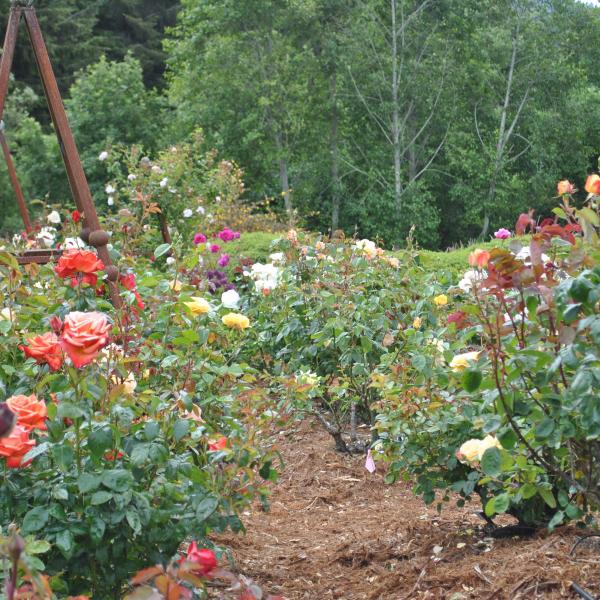Moss Family Temperate Woodland Garden
About the Garden
Discover the Wollemi Pine Wollemia nobilis in the Moss Family Temperate Woodland Garden at the Humboldt Botanical Garden. “…until1994 Wollemia was known only from fossils, dating from 120 million years ago. Then a group of 30 or so were discovered by a forester at the bottom of a canyon in the Blue Mountains of New South Wales, Australia. They were growing alongside flowering trees by a stream… Finding Wollemia was not quite like finding Tyrannosaurus rex, but it is conceptually similar.” (Secret Life of Trees, Collin Tudge)
The garden’s specimen was planted at the top of the Raul Ruiz Iris Douglasiana Reserve. The Humboldt Botanical Gardens Foundation proudly preserves rare and native species in its gardens.
There are many micro-climates within the Humboldt Botanical Garden. Tucked within a sunny bowl, slightly inland and up in elevation from the Dedekam Ornamental Terrace Garden or the Lost Coast Brewery Native Plant Garden, the Moss Family Temperate Woodland Garden is protected from the coastal winds ten degrees warmer than the lower, more exposed gardens. These factors allow tender temperate plants to thrive on the coast.
There is an extensive Rhododendron Collection within the Moss Family Temperate Woodland Garden. Mild temperatures, wet winters and dry cool summers define our temperate climate.
The Moss Family Temperate Woodland Garden contains an extensive collection of rhododendron species and hybrids from the Rhododendron subsection Maddenia. These are rhododendrons from the lowland forests of the Himalaya stretching from Southwest China through Vietnam, Laos, Thailand and Burma (Myanmar) to India. Living in shaded and wet temperate rain forest conditions, most of the members of this group are epiphytes and have large leaves. Their flowers are the largest in the genus Rhododendron and many are quite fragrant. Most of the Temperate Woodland Garden’s Maddenia specimens have been obtained from the Rhododendron Species Botanical Garden in Federal Way, Washington and are from seeds collected in the native habitats. The Rhododendron Species Botanical Garden is unable to grow these unusual rhododendrons outside in the Seattle area because the winters are much colder than their native habitats, thus in this ideal climate the Moss Family Temperate Woodland Garden is the custodian of this unique collection.
In May the glorious Himalayan Meconopsis poppies begin to bloom with their true-blue petals and golden stamens. Blue Poppies have a reputation of being difficult to grow, but here they are happy. Several species of Meconopsis poppy are grown from pink, lavender, white and golden.
June & Tim Walsh, Benefactors of the Walsh Family Gathering in the Moss Family Temperate Woodland Garden, have generously cared for the temperate garden and its Rhododendrons since its conception.
The Moss Family Temperate Woodland Garden was named after Larry Moss (1934-2006), former HBG President, lover of Rhododendrons & benefactor of the Humboldt Botanical Garden.
Features
- 6435
img_4791.jpg
https://www.hbgf.org/sites/hbgf.org/files/img_4791.jpgpaperbark.jpg
https://www.hbgf.org/sites/hbgf.org/files/paperbark.jpgdsc_0651.jpg
https://www.hbgf.org/sites/hbgf.org/files/dsc_0651.jpgdsc_0653.jpg
https://www.hbgf.org/sites/hbgf.org/files/dsc_0653.jpg
Acer griseum - "Paperbark Maple"
A species of flowering plant in the family Sapindaceae, native to central China. It is a small to medium-sized deciduous tree, reaching 20–30 ft tall and 16–20 ft wide. The bark is smooth, shiny orange-red, peeling in thin, papery layers. In The Moss Family Temperate Woodland garden it exhibits beautiful fall color.
- 6436
maddenia.jpg
https://www.hbgf.org/sites/hbgf.org/files/maddenia.jpg
Rhododendron Maddenii
Subsection Maddenia is a large and widespread group of approximately forty species. Members of this diverse group are found the eastern Himalaya (Nepal) in the west to southeastern China and adjacent regions of Vietnam, Laos, and Thailand in the east. Species in this subsection are tender to semi-hardy. They typically have large, often highly fragrant flowers and a straggly or open growth habit. Many have beautiful smooth and exfoliating bark and/or colorful and interesting foliage, and many forms flower quite late in the season, well past the rush of spring. The Moss Family Temperate Woodland Garden is one of a handful of public gardens in North America which grows these rhododendrons outside a greenhouse.
- 6437
dsc_0470.jpg
https://www.hbgf.org/sites/hbgf.org/files/dsc_0470.jpghbg_blue_poppies_final-108-1_4.jpg
https://www.hbgf.org/sites/hbgf.org/files/hbg_blue_poppies_final-108-1_4.jpgdsc_0497.jpg
https://www.hbgf.org/sites/hbgf.org/files/dsc_0497.jpgdsc_0471.jpg
https://www.hbgf.org/sites/hbgf.org/files/dsc_0471_0.jpg
Meconopsis - "Himalayan Blue Poppy"
The popular name "Himalayan blue poppies" or “Tibetan Blue Poppy” is usually applied to Meconopsis some of which have beautiful blue flowers. Given suitable conditions and care in cultivation, they should persist and flower year after year. This is a tricky plant to grow and is a favorite in botanical gardens where it can grow. Keen gardeners who can give it an environment in likes will be rewarded in late April to May with spectacular blooms. In the Moss Family Temperate Woodland Garden it is grown in light shade.
- 6438
img_5044.jpg
https://www.hbgf.org/sites/hbgf.org/files/img_5044.jpg
Ligularia - "Britt Marie Crawford"
A genus of robust Old World herbaceous perennial plants in the sunflower family. Ligularia ‘Britt Marie Crawford’ has dark purple to bronze foliage in contrast to mostly green foliage in the species. They have yellow or orange flower heads, and are native to damp habitats mostly in central and eastern Asia. The name Ligularia, from the Latin for "strap", refers to the shape of the ray florets. The Ligularia in the Moss Family Temperate Woodland Garden are grown in an area with consistently moist soil and full sun.
- 6452
hbg_twg_mary_gearheart_and_wollemia_2018_10.jpg
https://www.hbgf.org/sites/hbgf.org/files/hbg_twg_mary_gearheart_and_wollemia_2018_10.jpghbg_wollemia_dscf0610_3.jpg
https://www.hbgf.org/sites/hbgf.org/files/hbg_wollemia_dscf0610_3.jpgdsc_0329.jpg
https://www.hbgf.org/sites/hbgf.org/files/dsc_0329.jpg
Wollemia nobilis
Wollemia nobilis is a living fossil from the family Araucariaceae (are-raw-care-ace-eeuh) which is related to the Araucaria araucana commonly known as Monkey Puzzle. There are fossils of the Wollemia as well as other Araucariaceae dating from the time of the dinosaurs (245 to 65 million years ago). In 1994 a small grove of Wollemia nobilis was found in the bottom of a canyon along a stream in Eastern Australia’s Wollemi National Park growing among flowering trees. Although the fossil records show that Araucariaceae relatives were growing worldwide, there are now 41 species relegated to the Southern Hemisphere; South America, Australia, New Caledonia, Borneo and New Zealand. Colin Tudge, author of The Secret Life of Trees, writes “they are a relict group, and we should be grateful for the survivors". We are grateful for our two Wollemia nobilis in the Moss Family Temperate Woodland Garden at Humboldt Botanical Garden.

